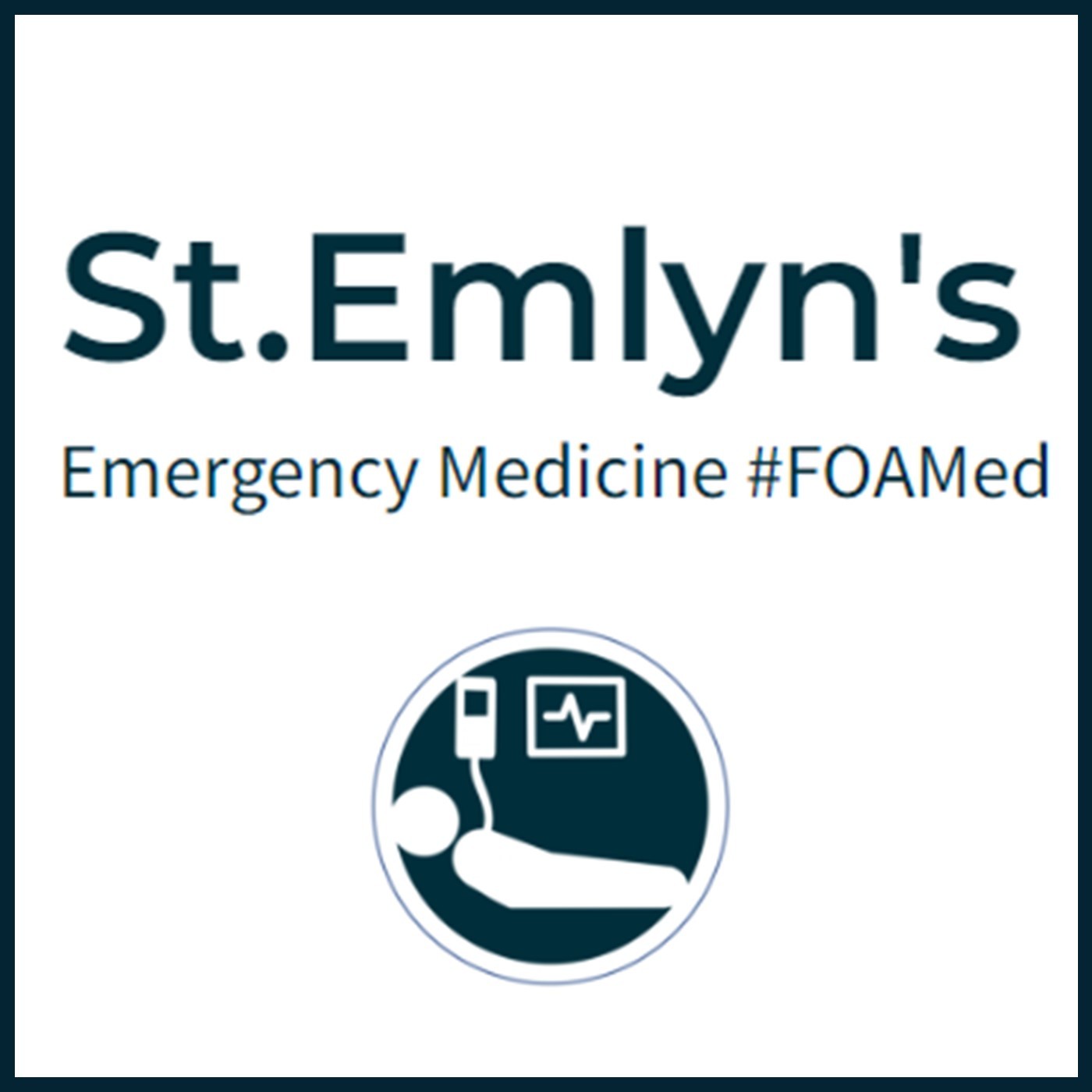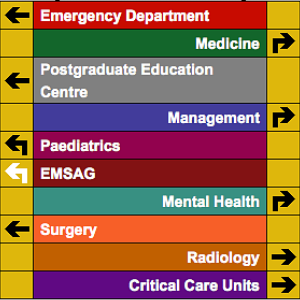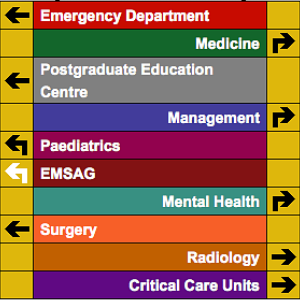
1.3M
Downloads
272
Episodes
A UK based Emergency Medicine podcast for anyone who works in emergency care. The St Emlyn ’s team are all passionate educators and clinicians who strive to bring you the best evidence based education. Our four pillars of learning are evidence-based medicine, clinical excellence, personal development and the philosophical overview of emergency care. We have a strong academic faculty and reputation for high quality education presented through multimedia platforms and articles. St Emlyn’s is a name given to a fictionalised emergency care system. This online clinical space is designed to allow clinical care to be discussed without compromising the safety or confidentiality of patients or clinicians.
Episodes

Sunday Oct 28, 2018
Ep 120 - The pursuit of excellence with Nat May at #stemlynsLIVE
Sunday Oct 28, 2018
Sunday Oct 28, 2018
This presentation was given at the inaugural #stemlynsLIVE conference on the 8th of October 2018 in Manchester. You can read more about the presentation and the conference here. https://www.stemlynsblog.org/in-pursuit-of-excellence/

Monday Oct 22, 2018
Ep 119 - September 2018 Round Up
Monday Oct 22, 2018
Monday Oct 22, 2018
September Review: Key Insights from the Sentemlyns Podcast
Welcome to the latest edition of the Sentemlyns podcast blog. I’m Simon Carly, and today we're diving into the significant papers and events from September. We're a tad late this month due to the bustling activities surrounding the Sentemlyns conference and the Teaching Court course, both of which were tremendous successes here in Manchester. Stay tuned as we delve into the highlights of September, from groundbreaking studies to enlightening conferences.
Management of the Airway in Cardiac Arrest
Key Studies by Ashley Levy
We kick off with a comprehensive look at two pivotal papers by Ashley Levy, focusing on airway management in cardiac arrest. These studies, eagerly awaited by the medical community, provide critical insights into pre-hospital care.
Airways 2 Study
Published in JAMA in August, the Airways 2 study examined over 9,000 patients in the UK pre-hospital environment who suffered cardiac arrests. The study excluded patients who quickly returned to spontaneous circulation after a couple of shocks. The remaining patients were randomized into two groups: those receiving a supraglottic airway and those receiving an endotracheal tube.
Findings: The study revealed no significant difference in outcomes between patients who received endotracheal intubation versus those with a supraglottic device. This challenges the long-held belief that intubation is superior in cardiac arrest scenarios.
Implications: The findings suggest that in pre-hospital settings, the choice of airway device might be less critical than previously thought. It underscores the importance of managing ventilation effectively, regardless of the airway device used. For many practitioners, this means opting for the quickest and easiest airway device, typically a supraglottic airway. However, in prolonged or complex cases, converting to an endotracheal tube might still be preferable.
Laryngeal Tube vs. Endotracheal Intubation in the US Study
Another study published in JAMA, conducted in the US, compared endotracheal intubation with the use of a laryngeal tube. Similar to the Airways 2 study, it found no significant advantage to using an endotracheal tube. Interestingly, this study hinted at a slight benefit for the laryngeal tube, though this requires further investigation.
Conclusion: Both studies indicate that for pre-hospital cardiac arrest, the priority should be securing an airway quickly and effectively. While supraglottic airways may suffice in many cases, endotracheal tubes remain a viable option in more complex scenarios.
Global Health and Responsibility
Stefan Brujins’ Perspective
Stefan Brujins, a friend and colleague now working in the UK, provided a thought-provoking post on our responsibilities toward global health. Reflecting on his experiences growing up in South Africa, Stefan challenges us to reconsider our assumptions about equality and diversity in healthcare.
He directs us to an impactful presentation by Annette Alenio at SMACC, emphasizing the need for togetherness in global health. This presentation is a must-watch for anyone interested in global health, offering valuable insights on how we can contribute more effectively to the global medical community.
Highlights from the EUSEM Conference
Diverse Learning Experiences
The EUSEM conference, a combined event with the Royal College of Emergency Medicine, held in Glasgow, was a highlight of September. This event is renowned for its diversity and the unique learning opportunities it offers.
Treatment of Massive PE by Dan Horner
Dan Horner kicked off the conference with an insightful presentation on managing massive pulmonary embolism (PE). His update reflects the latest advancements and the complexities involved in clinical decision-making for thrombolysis in emergency settings. The emphasis on shared decision-making between clinicians and patients was particularly noteworthy.
European Simulation Cup Victory
Members of the Sentemlyns team joined the Royal College of Emergency Medicine team in the European Simulation Cup and emerged victorious. This competition, involving around 14 teams, culminated in a major incident simulation. The win was a testament to the team's skill and collaboration.
Narrative Learning and Storytelling in Emergency Medicine
Simon Carly’s Presentation
I had the opportunity to present on the use of narrative learning and storytelling in emergency medicine. While not a traditional clinical topic, the importance of engaging learners through storytelling cannot be overstated. Case reports, despite being viewed skeptically in literature, remain powerful tools for education when used correctly.
I drew heavily on the work of Jonathan Gottschall, particularly his book "The Storytelling Animal." Understanding the science behind storytelling can transform educational strategies, making them more effective and memorable.
Managing Sick Neonates
Natalie’s Comprehensive Guide
Neonates, with their unique physiology, often present challenges in emergency medicine. Natalie provided an excellent post on managing sick neonates, using the analogy of micro machines to explain various aspects of neonatal care. From glucose metabolism issues to identifying cardiac problems in premature babies, her guide is invaluable for practitioners who may not regularly deal with neonates.
Monkeypox Awareness
Janis Byombi’s Expertise
Monkeypox, a relatively obscure virus related to smallpox, has seen a recent outbreak with cases imported to the UK. Janis Byombi, our expert in international and tropical diseases, detailed the symptoms, diagnosis, and management of monkeypox. While generally self-limiting, awareness and proper handling are crucial, especially for healthcare workers who might be at risk.
RecessTO Conference Insights
Innovative Approaches to Learning
Ashley Liebergen shared her experiences from the RecessTO conference organized by Chris Hicks in Toronto. The conference's innovative approach combined traditional knowledge sharing with practical workshops and simulations, enhancing the overall learning experience. This method of building knowledge progressively throughout the day was particularly effective and engaging.
EMS Gathering in Ireland
Learning with Leisure
The EMS Gathering in Cork, Ireland, offered a unique blend of formal lectures and experiential learning. This “learning with leisure” approach took attendees to various locations around Cork for hands-on experiences, from airport emergencies to extrications.
Emotional Learning Experience One standout session was a cardiac arrest scenario staged in a theatre, focusing on the interaction between medical teams and the patient's relatives. This emotionally charged and theatrically presented scenario highlighted the importance of communication and empathy in emergency medicine.
Zero Point Survey
Enhancing Resuscitation Preparedness
Finally, I rounded off September with a post on the zero-point survey. This concept emphasizes that resuscitation begins before the patient arrives, utilizing the critical minutes from the initial alert to prepare thoroughly. This proactive approach can significantly improve resuscitation outcomes and efficiency.
Conclusion
September was a month of substantial learning and reflection for the Sentemlyns team. From groundbreaking studies in airway management to innovative approaches in global health and emergency medicine education, we've covered a broad spectrum of topics. As we look forward to October and beyond, we remain committed to bringing you the latest insights and developments in emergency medicine.
Thank you for joining us on this journey. Stay tuned for more updates and have a great day!

Tuesday Oct 16, 2018
Ep 118 - August 2018 Round Up
Tuesday Oct 16, 2018
Tuesday Oct 16, 2018
St Emlyn’s Monthly Round-Up: August Highlights and Key Insights
Hello and welcome to the St Emlyn’s blog! I’m Simon Carley and today; I’m thrilled to share with you some of the standout moments and key insights from our blog in August. Yes, I know it’s October now, but we’ve been incredibly busy organizing the St Emlyn’s Live and the teaching course in Manchester. More on that in a later post. It’s been a fantastic period for us, and even though we’re a bit behind, it’s perfectly okay. Let’s dive into some spaced repetition and revisit the exciting content from August.
Natalie May’s Adventures Down Under
In August, we featured a series of blogs by Natalie May, chronicling her experiences at the Emergency Medicine of South-Os conference in Australia, where she served as a keynote speaker. Natalie covered several essential topics during her time there, providing valuable insights and lessons for emergency medicine professionals.
One of the key sessions she highlighted was about the effective use of apps in emergency medicine. This session was particularly interesting as it covered various clinical applications that can enhance productivity and patient care. Natalie shared top tips from her session, many of which she personally uses. This collection includes clinical tools and productivity apps, making it a must-read for anyone looking to optimize their practice. Many of these tips also tie back to a post by Scott Weingart from a few years ago about getting things done in emergency medicine. Natalie’s update builds on Scott’s foundation, providing new insights and practical advice for today’s busy and complex medical environment.
Lessons Learned at the Conference
Another highlight from Natalie’s posts was a session on lessons learned. This session brought together five respected professionals—Gary Birk, Jesse Spur, Natalie herself, Ian Summers, and Tim Lewinburg—who discussed instances where things didn’t go as planned. These stories weren’t just about clinical errors but also about soft skills, which, as we know, are anything but soft.
The panel covered communication issues, handover challenges, and awareness of equality and diversity in the emergency department. One poignant story involved an equality and diversity issue where Natalie acknowledged a consultation that didn’t go as expected. These discussions are crucial as they address elements that are challenging to learn from textbooks but significantly impact patient care and team dynamics.
Rick Body’s Troponin Insights
Moving on, we had an exceptional post by Rick Body on troponin, specifically focusing on high-sensitivity troponin samples. Rick is a leading authority on troponin, and his insights are invaluable. One particularly critical point he raised was the impact of biotin supplements on troponin assays.
Rick explained that patients taking biotin might show negative troponin results even when there is a myocardial infarction. This is a significant finding as it could lead to missed diagnoses. Rick advises emergency departments to either determine the type of analyzer their lab uses or routinely check biotin levels in patients to avoid potentially serious errors. This post is a must-read for anyone involved in emergency medicine as it provides practical advice to enhance diagnostic accuracy.
SMAC Conference and the CESR Route
August was also a month of anticipation for the upcoming SMAC conference. We discussed the excitement surrounding this event, which promises to be an incredible gathering of emergency medicine professionals. If you haven’t registered yet, make sure to do so as this will be the last SMAC, and it’s set to be unforgettable.
We also explored the CESR route in the UK. For those unfamiliar, the CESR (Certificate of Eligibility for Specialist Registration) is an alternative path to becoming a consultant in emergency medicine. Unlike the traditional six-year training program, the CESR route is portfolio-based and has recently undergone some changes. Gareth, who has successfully navigated this process and joined us as a consultant, shared his experiences and offered practical advice. His insights are particularly valuable for anyone considering this path, emphasizing the importance of early preparation and understanding the requirements.
Intravenous Fluids in Critical Care
One of the standout academic reviews we featured in August was on the use of intravenous fluids in critical care. Authored by Silam Lam, John Myberg, and Armando Bellomo, it provides a comprehensive overview of current best practices and evidence in fluid management.
The review highlights several key points. Firstly, the evidence base for most IV fluids is surprisingly weak, which is concerning given how widely they are used. The traditional approach of aggressive fluid resuscitation (fill them up until they can’t take any more) is now considered potentially harmful. Instead, a more cautious and mindful approach is recommended.
The review also discusses the importance of choosing the right type of fluid and adjusting the volume based on the type of shock. Dynamic assessment tools like point-of-care ultrasound are emphasized as they provide real-time insights into patient status, making fluid management more precise. The paper also touches on the role of the glycocalyx, an essential barrier between intravascular and extracellular fluid, which plays a critical role in fluid management during illness.
Avoiding Harmful Fluids
In addition to general fluid management principles, the review provides specific recommendations on which fluids to avoid. Hydroxyethyl starch solutions, for instance, should not be used, a point we have reiterated on the blog before. Gelatin, another fluid type, is also not recommended due to its limited benefits and potential risks.
Human albumin, although used more frequently in critical care, especially for conditions like sepsis, does not show significant advantages in most scenarios and should be avoided in traumatic brain injury. The ongoing debate between balanced solutions and normal saline is also addressed, with the review suggesting that balanced solutions may offer slight advantages in certain contexts.
Moral Injury in Emergency Medicine
Finally, we revisited a fantastic paper and podcast on moral injury by Esther Murray. This topic has resonated deeply with many in the emergency and critical care fields. The paper explores the psychological and emotional challenges faced by healthcare professionals, particularly those working in high-stress environments.
Esther’s discussion on moral injury—how the distress from perceived ethical transgressions impacts healthcare workers—is incredibly poignant. Given the increasing focus on mental health and well-being in our profession, understanding and addressing moral injury is crucial for sustaining our workforce. This small but significant study sheds light on an issue that many of us have experienced, even if we haven’t fully acknowledged it.
Wrapping Up August’s Highlights
August was indeed a month packed with valuable insights and crucial updates for the emergency medicine community. From Natalie May’s adventures and lessons learned to Rick Body’s troponin wisdom and the comprehensive review on intravenous fluids, there was a wealth of information to absorb and apply in practice.
We also delved into the practicalities of the CESR route, providing a roadmap for those considering this alternative path to consultancy. The discussion on moral injury, led by Esther Murray, reminded us of the importance of addressing the emotional and psychological well-being of healthcare professionals.
As we move into the latter part of the year, we look forward to bringing you more cutting-edge research, practical tips, and thought-provoking discussions. Stay tuned for the September podcast and the exciting content we have lined up from recent conferences. Thank you for being a part of the St Emlyn’s community, and here’s to continuing our journey of learning and improving patient care together.
